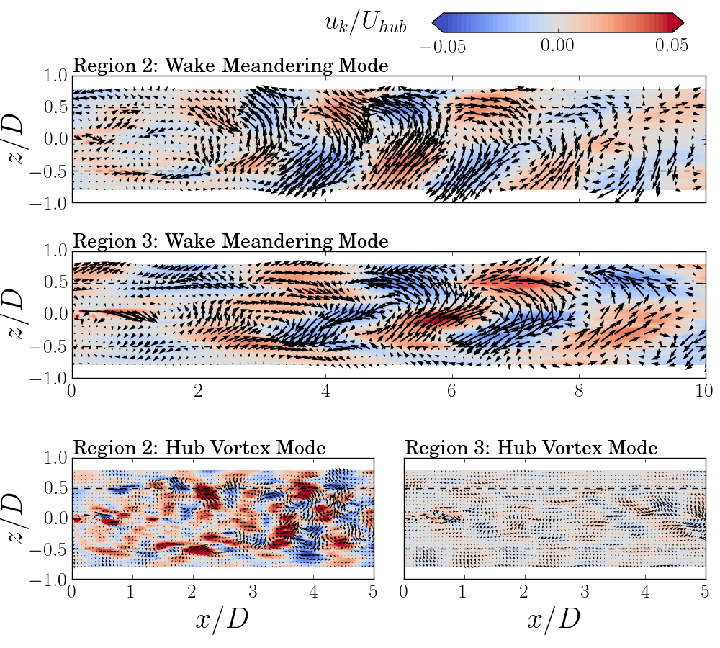Low-fidelity kinematic models are often employed as engineering tools and strikingly do not account for dynamic structures, which undermines accuracy. Moreover, analysis of coherent structures induced in wind farms remains underdeveloped.
We are developing a multi-fidelity framework, which entails a suite of solvers capable of different resolutions, to investigate in what capacity coherent structures in wakes can be utilized for forecast and to enable the design of data-driven reduced-order models for wind farms.

High-fidelity results would be used to inform lower-fidelity simulations through wind farm physics-informed closures derived using machine-learning, data assimilation algorithms and parameter inference. The framework would be systematically employed for i.) fundamental investigations of the wind farm flow, which can lead to innovative ways to increase wind farm power output and ii.) design of reduced-order modeling entailing development of closures models, adaptive algorithms for real-time data inclusion, and error estimation.
One approach we are looking into is using dynamic mode decomposition to identify dominant coherent structures such as wake meandering and the hub vortex which are affected by the turbine operating conditions.

By using relatively few modes features of the high fidelity flow field such as the amplitude and wavelength of wake meandering can be reconstructed. This leads to the potential of integrating a relatively sparse system efficiently up to many turbines in a wind farms

